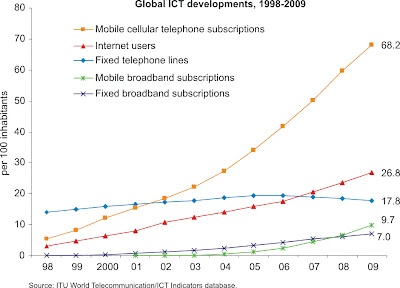Friday, February 18, 2011
Addressing the Digital Divide
Although, we all discuss the importance and the positive effects of educational technology on learners, it is easy to overlook the schools and the learners who are still struggling with some technology that many of us may consider obsolete. We don’t have to look at impoverished countries to see the level of the digital divide; we can even find it here, at home in major cities in the U.S. The technological divide is not only present among American schools, but also as to how our students are rated when compared to other countries. The goal of education is to have our students compete not only in the local job market, but also globally.
A group of leading educational organizations around the world are collaborating as part of the Global Learning Consortium to construct an outline of Digital Learning Services Standards to conform to new standards of educational technological tools. Currently, Florida Virtual School and the New York City Department of Education are supporting this framework (http://www.imsglobal.org/). This can help in generating some technological standards, which can affect how technological tools are distributed in schools and incorporated successfully as part of a learning environment.
For my multimedia presentation, I looked at cloud computing, where some of the tools are almost free or free. However, as Dr. Soloway noticed, the problem of open source technology is that many schools don’t have the infrastructure to support these technologies. Surprisingly, many times it will be a teacher considered to be “knowledgeable in computers,” or some other volunteer. The blame will be on the technology rather than on the insufficient time and knowledge to maintain it.
The BBC (17 January 2011) published an article regarding a UK government scheme to promote million of users in the UK to use the Internet, by offering free support through centers, selling cheap computers, offering IT training, and even promoting a computer recycling scheme. The article states that, according to a research, “going online can save people around £560 a year and that thousands of jobs are offered exclusively online” (http://www.bbc.co.uk/news/technology-12205412). However, what will happen when the finances for this initiative run out? Many new users will have technology they cannot use, and will return to the main problem of how to continuously support the infrastructure. This reminds me of another government program, the cash for clunkers car-buying stimulus bill, where there was a divide between who can afford a new car and who cannot!
According to Pew research, there are more users of cell phones than desktops. Therefore, Dr. Soloway suggests incorporating smart-phones as an educational tool, which can be the most feasible solution to incorporating technology.
According to the graph and chart, smart phones and hand-held devices will send desktop PCs to the obsolete area on the McLuhan's Tetrad and they will be the better option for providing a connection through the Internet. Furthermore, by incorporating into the classrooms, it can be seen as a breaker of the “have and have-not” technological tools.
A good example of how mobile technology is opening social networks for education is observed in an article published by Erin Conway-Smith (July 22, 2010). “Teaching with Cell Phones” in South Africa shows an impoverished neighborhood where students can connect through the Internet to any math volunteer tutor locally or globally. The article “Cell phone learning”, states that it uses the students’ own technology, which is always at hand. According to Vosloo’s research, among urban youth, 90 percent have access to cell phones and around 70 percent of those are GPRS-enabled phones, which are preferred for mobile learning”
(http://www.globalpost.com/dispatch/education/100720/south-africa-teaching-cell-phones).
Reference:
Soloway, E. (n.d.) The digital divide: leveling the playing field [Podcast]. Retrieved from http://sylvan.live.ecollege.com/ec/courses/14936/CRS-WUEDUC8812-3730077/EDUC_8848_PK_Transcript.pdf
Thornburg, D. (2009). Diversity and Globalism. Laureate Education, Inc. Retrieved from http://sylvan.live.ecollege.com/ec/crs/default.learn?CourseID=4199715&Survey=1&47=5828341&ClientNodeID=984645&coursenav=1&bhcp=1
Subscribe to:
Post Comments (Atom)




Orit,
ReplyDeleteTheoretically, supporting the digital divide by encouraging technology use in the classroom is a positive thing. However, as a classroom teacher, and seeing sixth, seventh, eighth, ninth, tenth and eleventh graders using their technology, I can clearly see how immaturity can distract students from focusing on educational goals. It is impractical and naive to remove all limitations for internet usage for classroom use with younger K-12 students.
On the other hand, impoverished communities, and students with disabilities are often lagging far behind their peers as far as comparable technological experiences, and this must be remedied.
The fine line between a full-out all-access availability, and no access, complete restriction lies the technological middle road which K-12 education should support. All students in this country should be offered the ability to learn skills which enable them to become gainfully employed, and become literate in the technology used in our everyday lives.
Orit, Great post. You have hit at the heart of the work I have been doing with mobile technology over the past couple of years. I do not think that mobile technology will completely replace the pc, but the pc will morph into something mobile like the tablets that are now coming to the market.
ReplyDeleteGreat work!